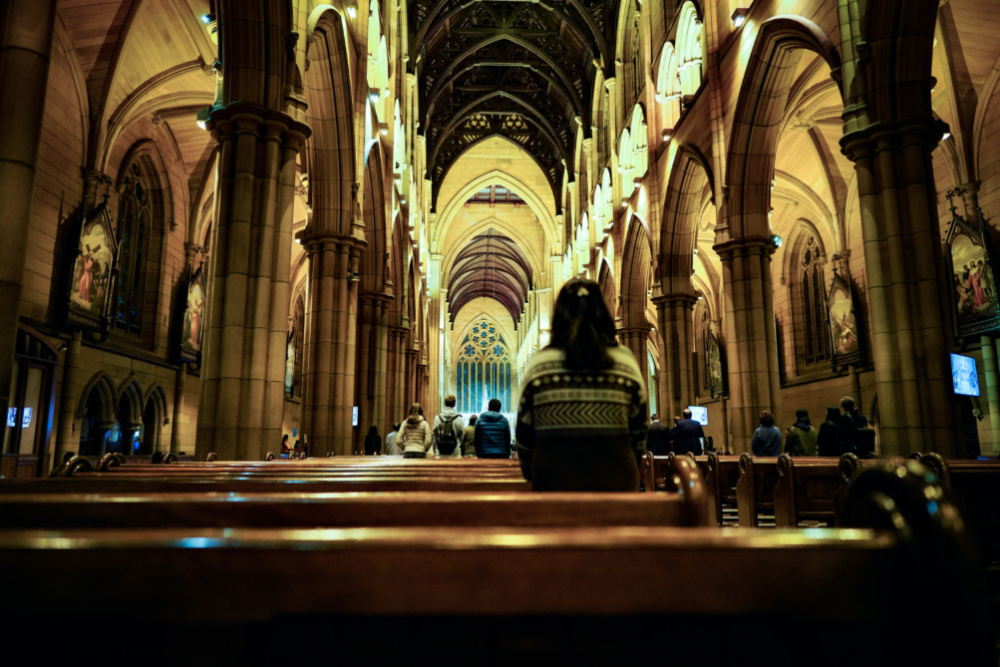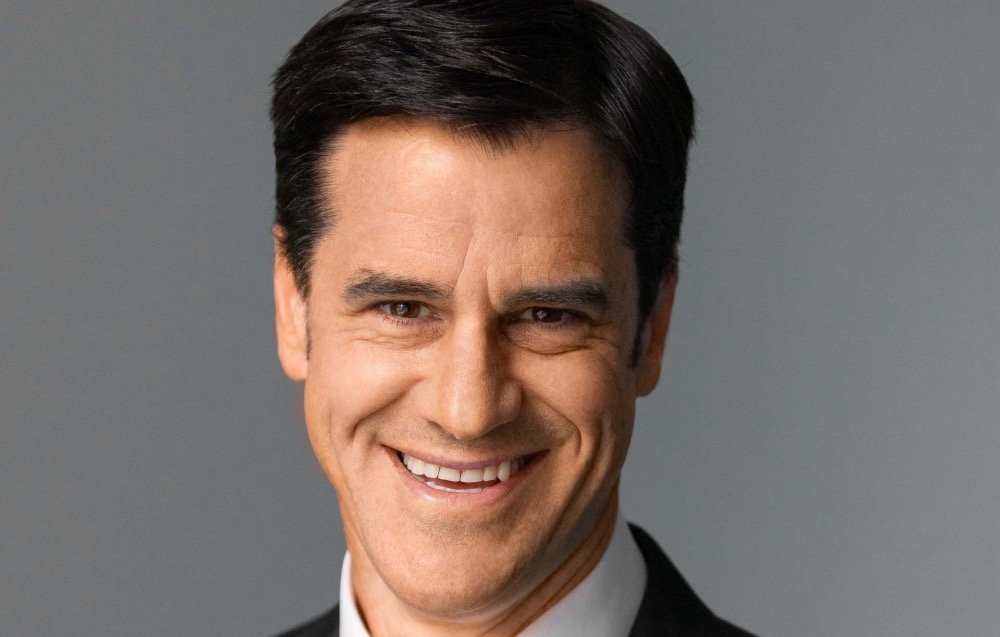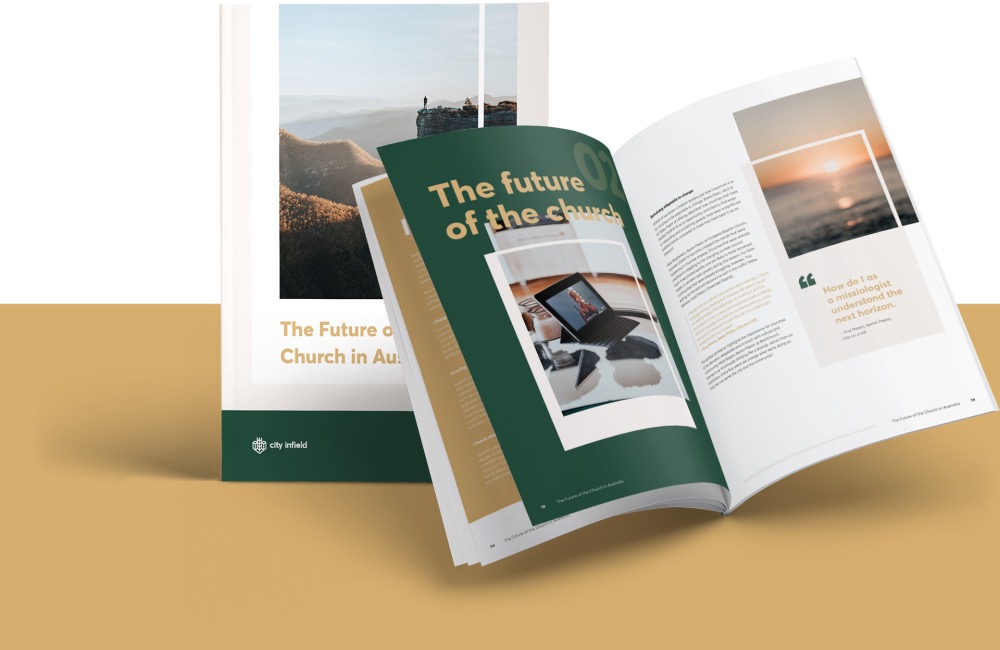
DAVID ADAMS speaks with researcher Mark McCrindle about the findings of a new report considering the future of the church in Australia as the nation looks beyond the coronavirus pandemic…
The coronavirus pandemic and its impacts – particularly the transition of churches to an online environment – have changed the way houses of worship in Australia operate, according to new research which also found some of those changes may be here to stay.
The research – which involved in-depth interviews with 30 prominent church leaders as well as a survey of more than 1,000 church-going Australians conducted in September – shows that a “hybrid” model, which caters to both congregations attending services in person as well as those doing so online, is likely to remain part of the church landscape in Australia into the future after leaders found online services enabled them to connect with a swathe of people who might not be able to – or might not wish to – attend services in person.

The future of the Australian church will involve a hybrid model including in person attendance but also online options, according to a new report. Pictured is St Mary’s Cathedral, seat of the Catholic Archbishop of Sydney. PICTURE: Fidel Fernando/Unsplash
Mark McCrindle, principal of Sydney-based research firm McCrindle – which conducted the research, sees the idea of a hybrid church as a positive move.
“It might mean that there is a bit more regularity of attendance and maybe not everyone every week in church but in the weeks when someone can’t particularly [attend in person]…they can still go online…” says McCrindle, noting this group could include parents with young children, the elderly, or those who are geographically distant. “So it might, if we add up [those] online and those in church…actually from an attendance perspective increase the frequency.”

Mark McCrindle. PICTURE: Supplied
“Most churches, particularly Protestant churches, did get something going [online]. For some it was simply putting a computer up the front with the camera on and using a Zoom link; for others they really invested with more sophistication. But, by now, most churches have got their digital strategy sorted – you know, it wasn’t just a week or two, it’s been many months. So that’s going to stay.”
– Mark McCrindle
While for some larger churches which were already streaming services prior to the pandemic the move to a hybrid model may not represent a big shift, for some smaller churches which introduced access to services online as a result of COVID-19 lockdowns, the change could be quite dramatic.
“Most churches, particularly Protestant churches, did get something going [online],” says McCrindle. “For some it was simply putting a computer up the front with the camera on and using a Zoom link; for others they really invested with more sophistication. But, by now, most churches have got their digital strategy sorted – you know, it wasn’t just a week or two, it’s been many months. So that’s going to stay.”
McCrindle doesn’t believe the hybrid model gives a particular advantage to those megachurches which already had well-developed online presences prior to the pandemic, noting that most of the surveyed church-goers indicated they preferred “less of a production and more of a smaller feel service” as well as live rather than a pre-recorded or pre-packaged services.
“And so the simple church…seems to be what church-goers who tune-in online are looking for,” he says.
The research, the results of which were presented in an online seminar held earlier this month as well as a report, The Future of the Church in Australia, was commissioned by an unnamed family trust to provide them with insights to guide their investment strategies as they look to fund Christian ministries. They agreed to share the findings on condition the trust could remain anonymous.
The 30 leaders interviewed for the report represented a spectrum of denominations including everyone from Mark Sayers, senior pastor of Red Church in Melbourne, Steve Cheong, founder of the RICE movement and Mike Jeffs, founder of the Australian Christian Channel to Richard Condie, Anglican Bishop of Tasmania, and Archbishop Peter Comensoli, Catholic Archbishop of Melbourne. All were based in Australia, with the exception of UK-based Nicky Gumbel, founder of the Alpha Course.
The use of online streaming technologies to connect people with church services and home-based prayer, Bible study or fellowship groups will certainly have changed some congregations – not the least by giving people the chance to easily sample services at churches other than those they normally attend.
“When church is online, people don’t just have to go to their church, they can go to any church…” says McCrindle. “That’s opened things up in some ways.”
But he adds that it remains too early to tell how much church congregations may have changed as a result of coronavirus lockdowns, church closures and the growth in online services.
“I think it is going to take a little while before we work out, when the dust settles, how many are still [in a congregation] – have we gone up or have we gone down?” says McCrindle. “The church has an older profile and older Australians have been more rattled by the health impacts of this and are going to be slower to come back…We really are in a new era and the church leaders say they really do not know when it all settles how they will be.”

The Future of the Australian Church report.
There have also been lessons to be learned by those churches which have opted to use online technologies, according to the research.
“The study showed that attention was waning during sermons – that was one of the challenges – and we’ve all experienced this with working from home or [using] Zoom, that everything is concentrated,” says McCrindle. “A 30 minute or 40 minute presentation from a stage is fine but that long on a Zoom is a really long time, so maybe it’s about being more efficient with some of the services…”
The research also showed that the hybrid churches will need to look beyond simply streaming the in-person service with the report stating that online church “will not be a replacement for meeting together, it will become an addition”.
This is underlined by figures showing that churchgoers have been attending church less – whether in person or online – during the coronavirus period. While the percentage of those who said they attended church weekly dropped from 61 per cent to 22 per cent during the coronavirus period, those saying they attended online services did rise but only from 27 per cent to 46 per cent. Attendance at church activities such as Bible studies or prayer meetings had also declined slightly.
One of the other trends to emerge from the research was that the era of churches renting facilities, particularly schools, in which to hold services is believed to be coming to an end.
“Firstly, because public facilities are getting more cautious of renting to Christian organisations because of some local pushback in their communities,” says McCrindle. “But, secondly, because…churches are trying to be a lot more than just the service and do a lot more through the week – and with other groups and ministries. And then it comes back to, therefore, the need for their own facilities. A lot of church leaders who have done the rental and now do the ownership, found that when they own their own facilities, they saw the numbers of church-goers significantly step up beyond any other growth factor because people now have a place that was home.”
Other findings from the research showed that church-goers said their church giving remained mostly unchanged during the coronavirus pandemic – good news for church finances – and that most church-goers were keen to get back to church in person.
A D V E R T I S E M E N T
{subscriber-ad}
It also revealed the growing need for churches to ensure members were involved to a greater degree in ministry – in both evangelism and discipleship – with some 38 per cent of surveyed church-goers saying the pandemic had led them to step up into ministry more because they were unable to leave it to paid clergy.
“That’s where this has been such a transformative experience for the Australian church,” says McCrindle. “As we said in the report, it’s almost like another Reformation – it’s put the tools of ministry back in the hands of the laity. Maybe we were getting a little bit lazy perhaps and…were happy to pay the clergy to do all the ministry. This has suddenly forced it back into the hands of all.”
McCrindle says the study shows the positive impact of this take-up by lay people and points to data showing 45 per cent Australian church-goers said the year had been one of significant or moderate spiritual growth for them personally compared with just nine per cent who said it had been a period of moderate or significant spiritual dryness.
Alongside the findings surrounding greater roles for laity in churches, church leaders interviewed for the study also highlighted the need to ensure different pathways are available for the next generation of leaders.
“What is the apprenticeship pathway for church and ministry leaders? What are the mentoring opportunities? What are leadership development pathways we can have to really ensure we’ve got diverse leaders professionally and culturally and generationally?” asks McCrindle. “And not everyone is going to fit the four-year theological college pathway. So to hear that was great because that’s the way that obviously we’re going to end up with those leaders that can speak into their particular community.”
This included a push to equip people to serve God outside the traditional role of the clergy, such as for those working in business or in Indigenous communities.
“[W]e’re now in a time where there’s increasing volatility and uncertainty and, as we found in the study this year particularly…people are looking for stability and substance and that leads people on a spiritual search, a search for meaning and truth and purpose beyond their own existence.”
– Mark McCrindle
The perception that Australians were not open to the Gospel was also among issues challenged in the report which recommended it was time to shift this “internal narrative” within churches.
“As we have found historically with major ructions – whether that be the world wars, depressions, major disasters – you find people recognising that they need a foundation beyond their own strengths,” says McCrindle. “And it’s not just COVID, we’re now in a time where there’s increasing volatility and uncertainty and, as we found in the study, this year particularly…people are looking for stability and substance and that leads people on a spiritual search, a search for meaning and truth and purpose beyond their own existence.”
In a similar vein, the report also concluded that it was time for churches to proactively speak into the “national dialogue to share Jesus’ heart for the nation” and quotes Alpha founder Nicky Gumbel as saying “This is not a moment for the church to retreat, it’s a moment for the Kingdom of God to advance”.
Noting that more than seven in 10 Australians express a belief in God, McCrindle says it’s an era in which the church should be “clear and step forward, rather than talk too much around that internal narrative “’Well, we’ve lost any right to speak”.
“As some of our interviewees said, ‘The Gospel’s too important for the church to mute itself’ and really, now is the time, in a time of great need in a community that is looking for answers, for the church to be articulate [and] to have narrative in a different way. It’s not a right, it doesn’t come from a position of structural authority, it ought not be authoritarian; it has to come from a posture of grace and humility. But a posture, nonetheless, of clarity that we have the truth and the hope and the foundation that society needs…That was the clear consensus of the interviewees as well.”





